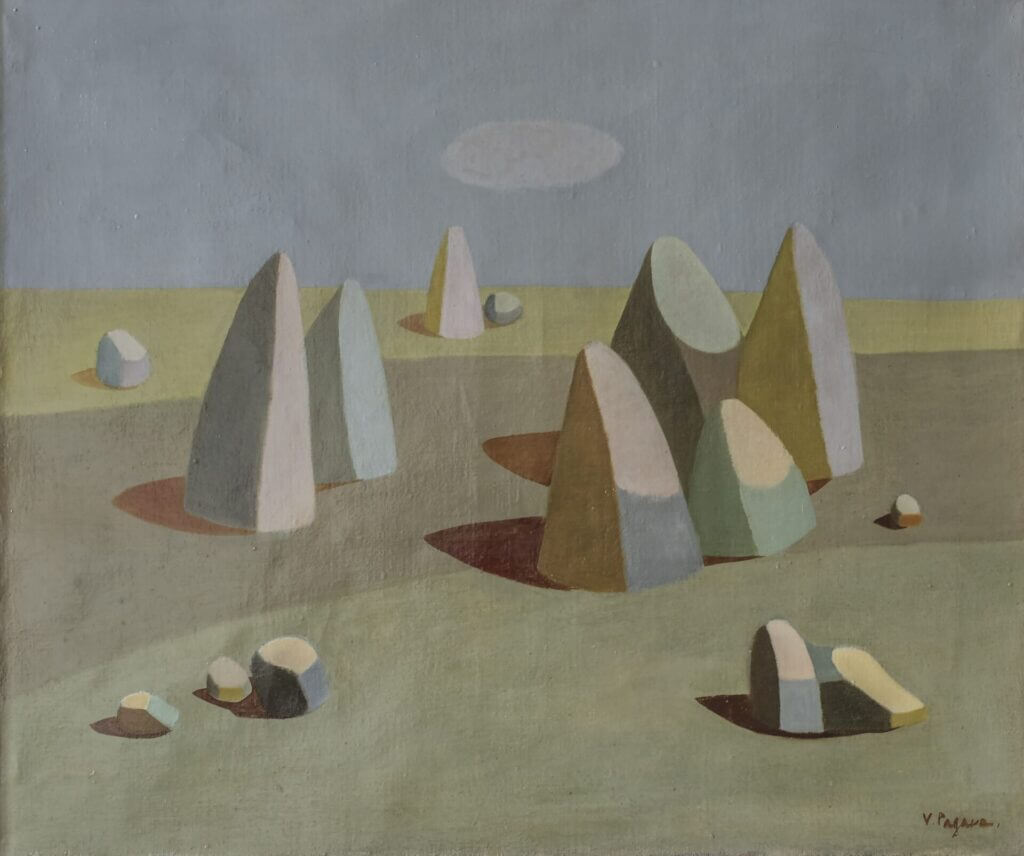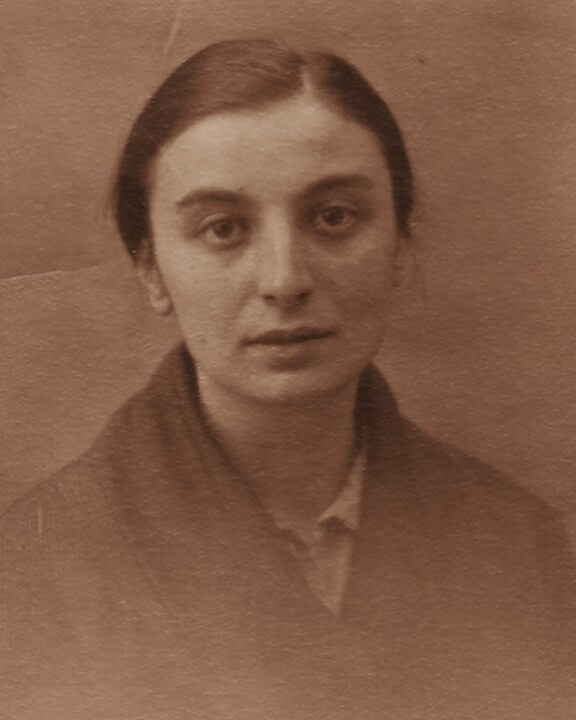Your currently viewing RAW Modern | Switch to RAW Contemporary
Les Pierres (Paysage), 1936
Catalogue essay by Blanche Llewellyn
From the beginning of her career in Paris, the paintings of Vera Pagava, though rooted in figurative representation, exhibited an affinity for abstract principles. Drawing from a post-cubist aesthetic, the stark simplicity of her early works, characterized by a restrained palette, revealed a quest for natural and essential forms – a precept undoubtedly influenced by her teacher Roger Bissière at the Académidie Ranson, whose directive was: “In front of nature, strive to reduce complex forms to simple forms; the closer you get to the essential: cubes, triangles, cones, pyramids, cylinders, circles… the more expressive your work will be”.
One of Pagava’s main concerns was the integration of the objet in space. Outside of her studio work, she created various compositions out of doors, including “Le Printemps,” (1936), a deserted landscape inhabited by a rock and three bare trees, foreshadowing the series of landscapes she then produced up to the war years.
“Les Pierres (Paysages)”, with its vibrant and luminous simplicity, embraces the unadorned and yet mysterious universe of her paintings.
The surrealist elements of this dreamlike landscape – a spiritual ambiance emphasised by the strong essence of the stones arranged in a ceremonial pattern with dark shadows – converge to convey a desert-like utopia.
A feeling of melancholy inhabits the painting; perhaps conjuring up Pagava’s exile from her home country?

